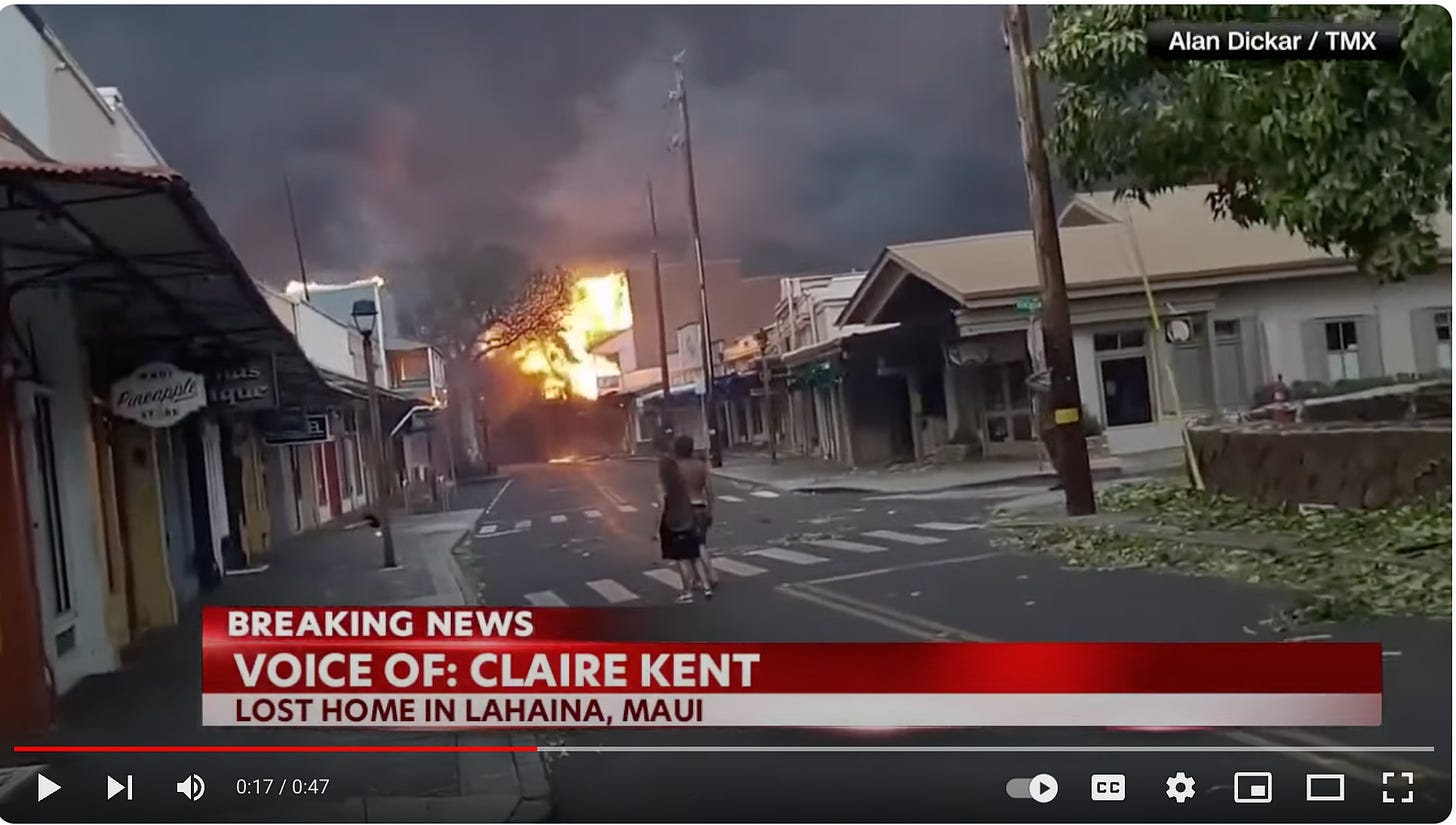I’m getting a lot of messages from people telling me that the fuel and wind conditions in Lahaina could not generate a fire of sufficient heat to melt aluminum engine blocks and wheels. These assertions are accompanied by the assertion that malevolent actors must have increased the combustion temperature by means of additional Directed Energy Weapons such as lasers and microwaves that targeted buildings and cars.
In response to these assertions, I have decided to post the following definitions of basic fire concepts.
1). Combustion: rapid chemical combination of a substance with oxygen, involving the production of heat and light.
2). Rate of Combustion: the burn rate (or burning rate) is a measure of the linear combustion rate of a compound or substance such as a candle or a solid propellant.
3). Fire Triangle: Oxygen, Heat, and Fuel.
4). Blacksmith Bellows: A device for blowing extra air onto a fire, making more oxygen available to burn. This makes the fire burn hotter than it would normally. These hotter temperatures make it possible to make metal soft enough to shape with a hammer and is critical for the entire blacksmithing profession.
5). Melting point of aluminum: 1,221°F
6). Average temperature of severe forest fire: 1,472° F
7). Temperature of gasoline fire : 1,878.8 °F
8). Temperature of propane fire: 3,596°F.
9). Temperature of large building fire: 2,000° F.
10). Fuel moisture: Amount of water in a fuel such as grass or wood. High moisture fuels such as green grass and green trees are significantly less flammable than low moisture fuels such as dry grass and dry wood.
Understanding the Crucial Role of Wind
When fuels are dry and relative humidity is low, wind is one of the most important factors that can influence fire danger and spread potential. Sustained periods of strong and/or gusty winds can lead to rapidly spreading wildfires, and can exacerbate fire behavior from ongoing fires.
Downslope (katabatic) winds (Chinook or Santa Ana winds) can be particularly dangerous, because these type of winds lead to further drying of the atmosphere and can also be very strong and lead to extreme fire behavior.
Sustained wind speeds or frequent gusts of 25 mph or higher are considered to be the minimum threshold for significant fire weather concerns when dry conditions (or ongoing fires) are already present. As wind speeds increase above the 25 mph, fire danger becomes even more of a concern.
Wind-driven extreme fire events are the scariest in terms of rapidly spreading fires that catch people off guard.
During the Lahaina Fire, winds were steadily blowing between 40-50, and apparently gusting up to 80 mph. The following video, looking up Front Street from the south, shows what appears to be a steady 40 MPH wind.
The combustion of the large wooden structures on Front Street appears to have ultimately created a FIRE STORM, with rising hot air creating a low pressure that caused a violently destructive in-draft of air from the surrounding area.
Understanding the Role of Fuel Moisture
Dry grass and wood will easily catch fire, and the fire will quickly spread it if is fanned by high winds.
Houses made of seasoned wood will catch fire and their box structure will draw air and burn much faster than living trees. This is why houses in wooded areas may be totally destroyed by a wildfire, while surrounding trees are left standing. Wind driven embers and other burning debris may easily set fire to buildings made of dry wood.
Understanding the Role of Gasoline and Propane in the Lahaina Fire
The gas station on the south side of Lahaina caught fire and apparently exploded (further investigation needed). Lahaina was packed with cars, and as the fire swept into town, their fuel tanks caught fire and incinerated the cars. Likewise, the town was full of propane fuel tanks that caught fire and exploded.
Understanding the Role of Lahaina’s Industrial District
The east side of Lahaina contained metal fabricator shots with welding fuels and oxygen tanks. Though further investigation is required to confirm, it appears that these caught fire and exploded.
Author’s Note: If you found this post informative, please considering subscribing to our Substack. For just $5.00 per month, you can really support our ongoing efforts to investigate and report what is going on in our crazy world. Many thanks, John Leake







This was a great post to support what did actually happen as the fire spread. The reasons it started in the first place however make me really angry and the fact that water was withheld and the power lines not turned off for 10 hours even more so. The government of Hawaii needs to be completely replaced. Lahaina was a known high risk for fire for at least a decade and there appears to have been zero risk management done. The policy decisions on the move to green energy and the diversions of funding away from maintenance of the existing infrastructure is a prima facia case of incompetence driven by “Climate Change advocates” to enrich investors and sellers of the “green” infrastructure.
It is a good thing that the fire didn't happen around the World Trade Center towers.